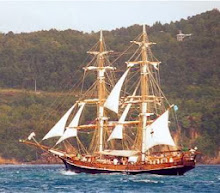In addition to a diversity of spoken language, there are also regional differences in culture among Han Chinese. For example, China's cuisine varies from Sichuan's famously spicy food to Guangdong's Dim Sum and fresh seafood. However, ethnic unity still exists between these two groups because of common cultural, behavioural, linguistic, and religious practices.
According to recent scientific studies, there are slight genetic differences throughout China. Due to several waves of immigration from Northern China to Southern China in China's history, there are strong genetic similarities in the Y chromosome between Southern and Northern Chinese males. However, the mitochondrial DNA of Han Chinese increases in diversity as one looks from Northern to Southern China, which suggests that many male migrants from northern China married with women from local peoples after arriving in Guangdong, Fujian, and other regions of Southern China. As this mixing process continued and more Han people migrated south, the people in Southern China became Sinicized and identified themselves as Han.
Historical documentation indicates that the Han were descended from the ancient Huaxia tribes of northern China. During the past two millennia, the Han culture (that is, the language and its associated culture) extended into southern China, a region originally inhabited by the southern natives, including those speaking Dai, Austro-Asiatic and Hmong-Mien languages. As Huaxia culture spread from its heartland in the Yellow River basin, it absorbed many distinct ethnic groups which then came to be identified as Han Chinese, as these groups adopted Han language (or variations of it) and customs.
For example, during the Shang Dynasty, people of the Wu area, in the Yangtze River Delta, were considered a "barbarian" tribe. They spoke a distinct language that was almost certainly non-Chinese, and were described as being scantily dressed and tattooed. By the Tang Dynasty, however, this area had become part of the Han Chinese heartland, and is today the most densely populated and strongest performing economic region in China, the site of China's largest city Shanghai. The people in the Wu area today speak the Wu dialects, which are part of the Chinese language family but are mutually unintelligible with other Chinese languages/dialects, and do not see themselves as a separate ethnic group. The Wu area is one example of many involving the absorption of different cultural groups in contributing toward the diversity of culture and language throughout the Han Chinese ethnic group.
According to recent scientific studies, there are slight genetic differences throughout China. Due to several waves of immigration from Northern China to Southern China in China's history, there are strong genetic similarities in the Y chromosome between Southern and Northern Chinese males. However, the mitochondrial DNA of Han Chinese increases in diversity as one looks from Northern to Southern China, which suggests that many male migrants from northern China married with women from local peoples after arriving in Guangdong, Fujian, and other regions of Southern China. As this mixing process continued and more Han people migrated south, the people in Southern China became Sinicized and identified themselves as Han.
Historical documentation indicates that the Han were descended from the ancient Huaxia tribes of northern China. During the past two millennia, the Han culture (that is, the language and its associated culture) extended into southern China, a region originally inhabited by the southern natives, including those speaking Dai, Austro-Asiatic and Hmong-Mien languages. As Huaxia culture spread from its heartland in the Yellow River basin, it absorbed many distinct ethnic groups which then came to be identified as Han Chinese, as these groups adopted Han language (or variations of it) and customs.
For example, during the Shang Dynasty, people of the Wu area, in the Yangtze River Delta, were considered a "barbarian" tribe. They spoke a distinct language that was almost certainly non-Chinese, and were described as being scantily dressed and tattooed. By the Tang Dynasty, however, this area had become part of the Han Chinese heartland, and is today the most densely populated and strongest performing economic region in China, the site of China's largest city Shanghai. The people in the Wu area today speak the Wu dialects, which are part of the Chinese language family but are mutually unintelligible with other Chinese languages/dialects, and do not see themselves as a separate ethnic group. The Wu area is one example of many involving the absorption of different cultural groups in contributing toward the diversity of culture and language throughout the Han Chinese ethnic group.
document: taiwan dna


